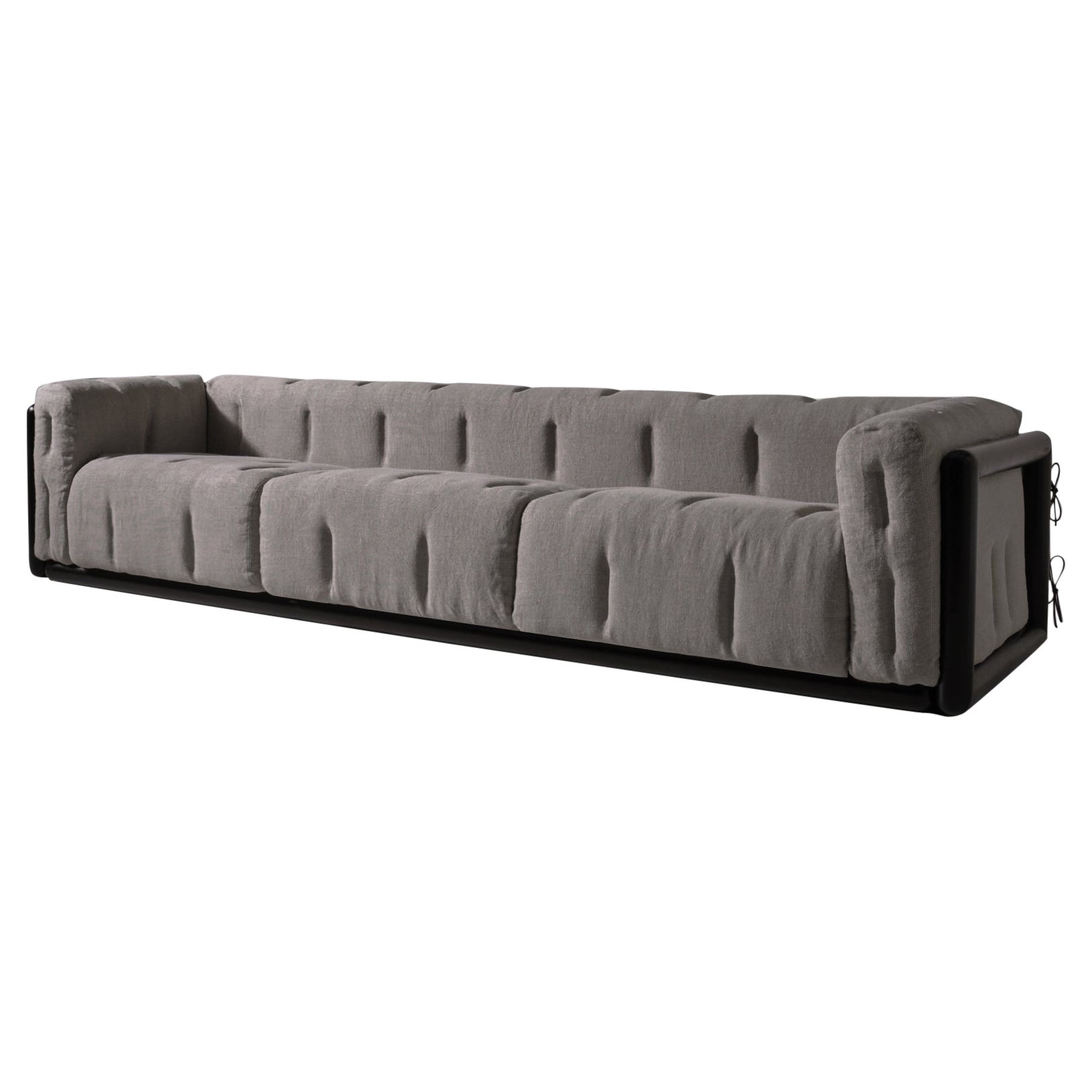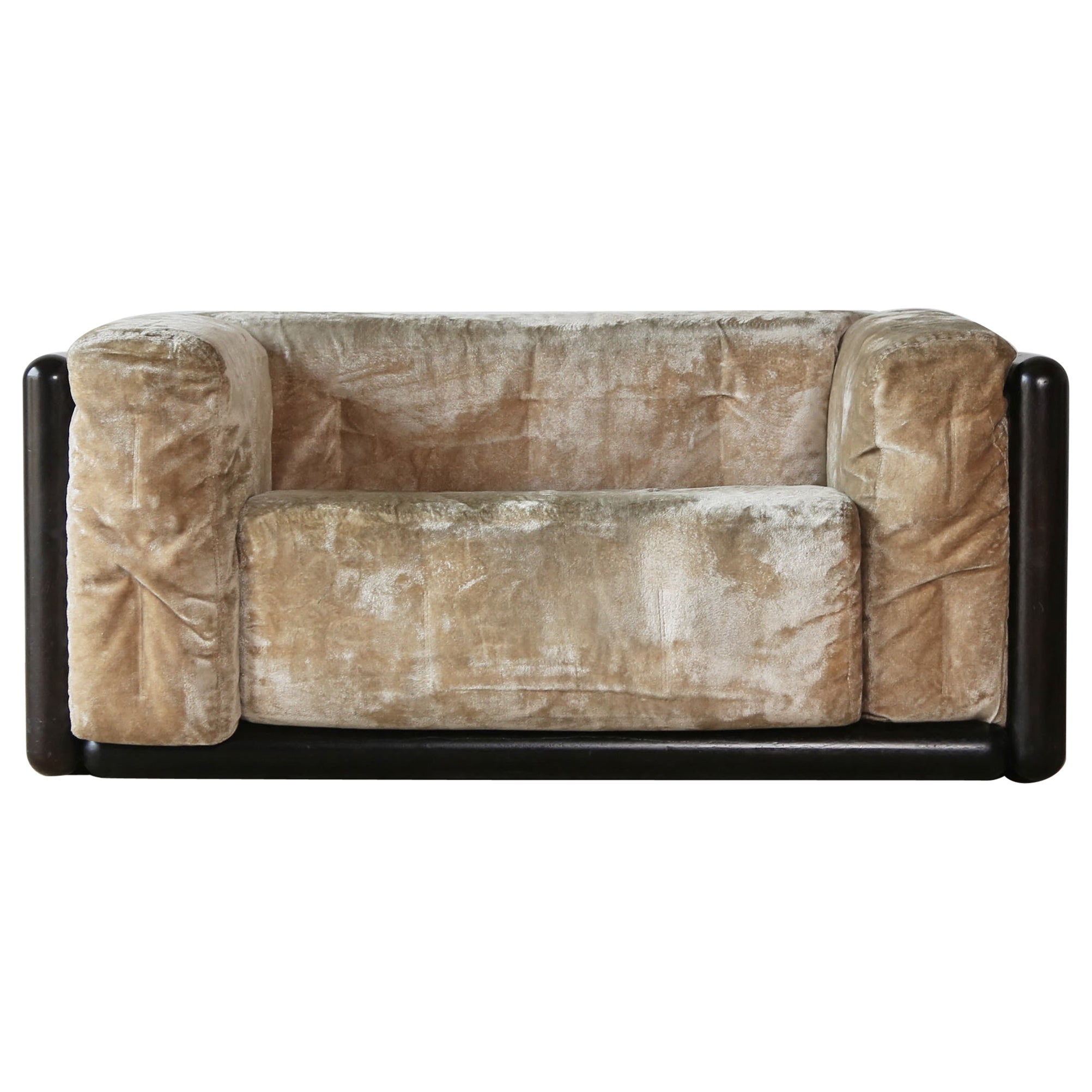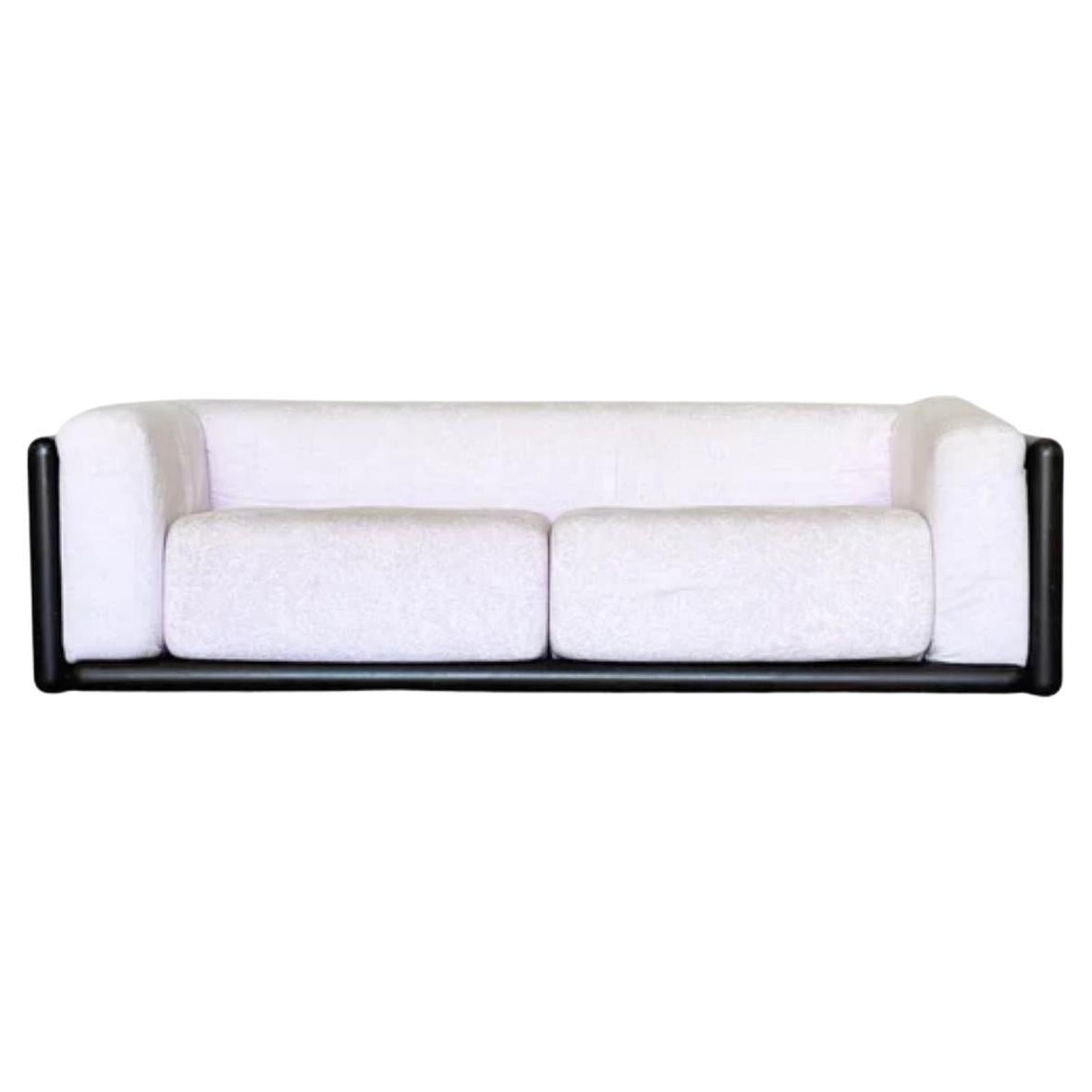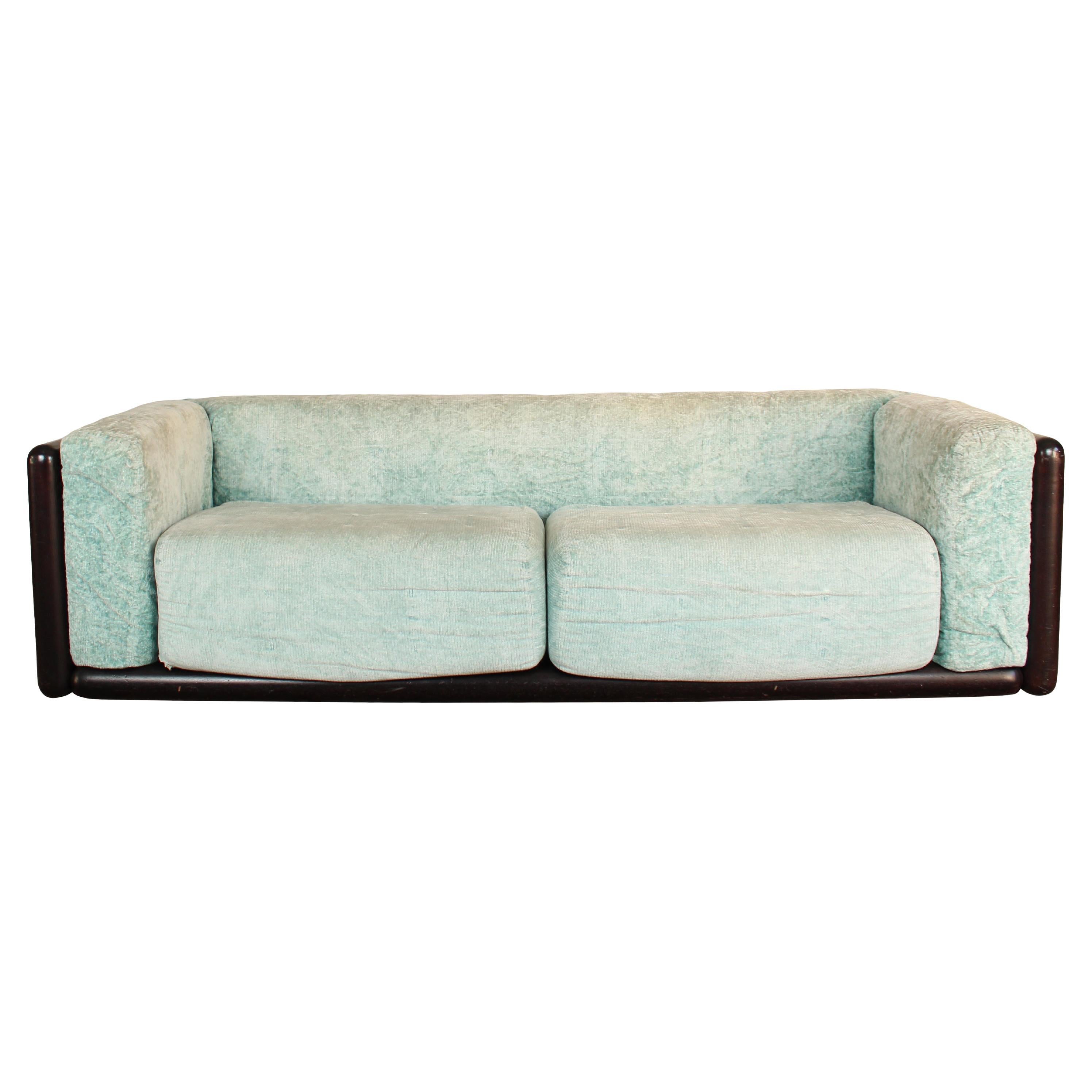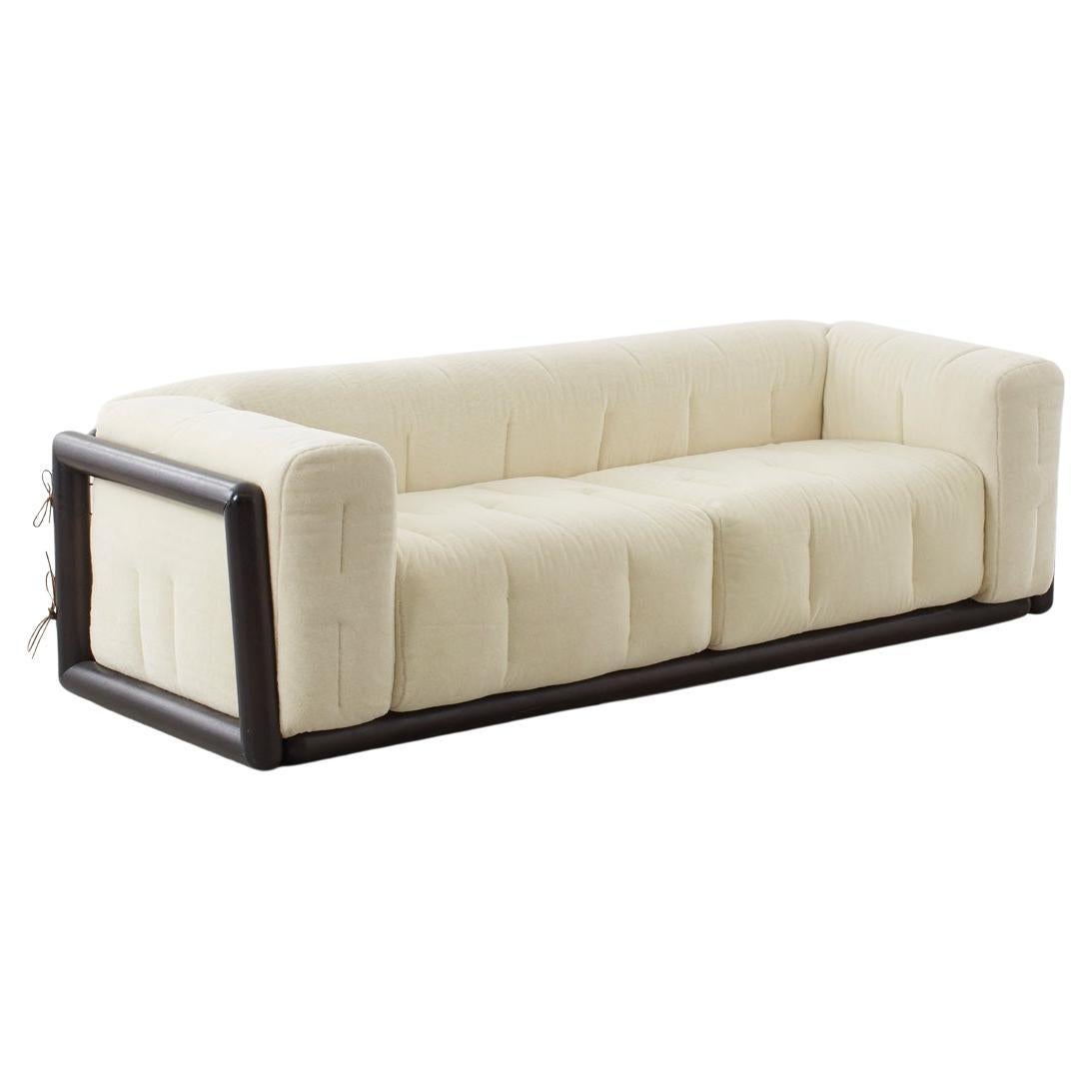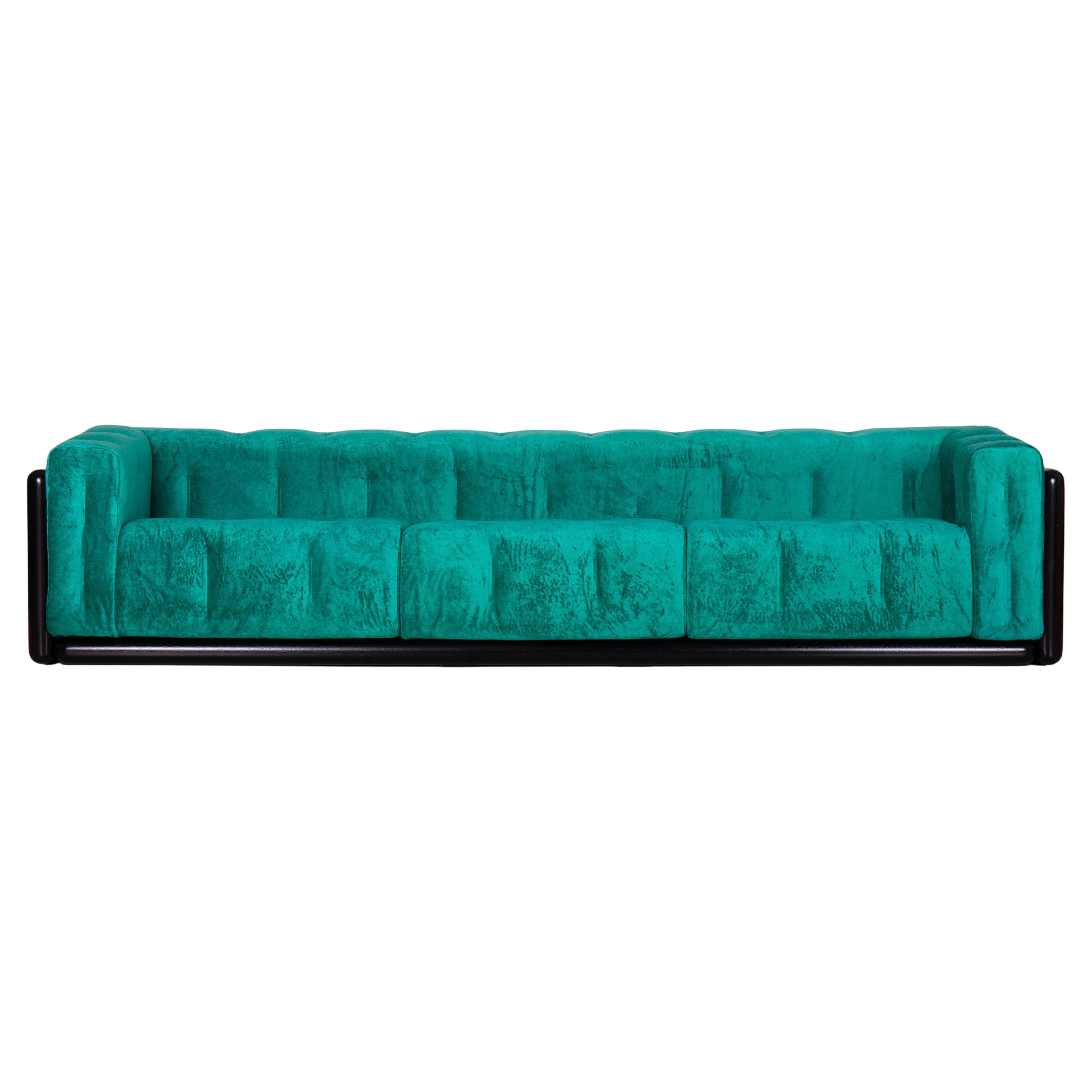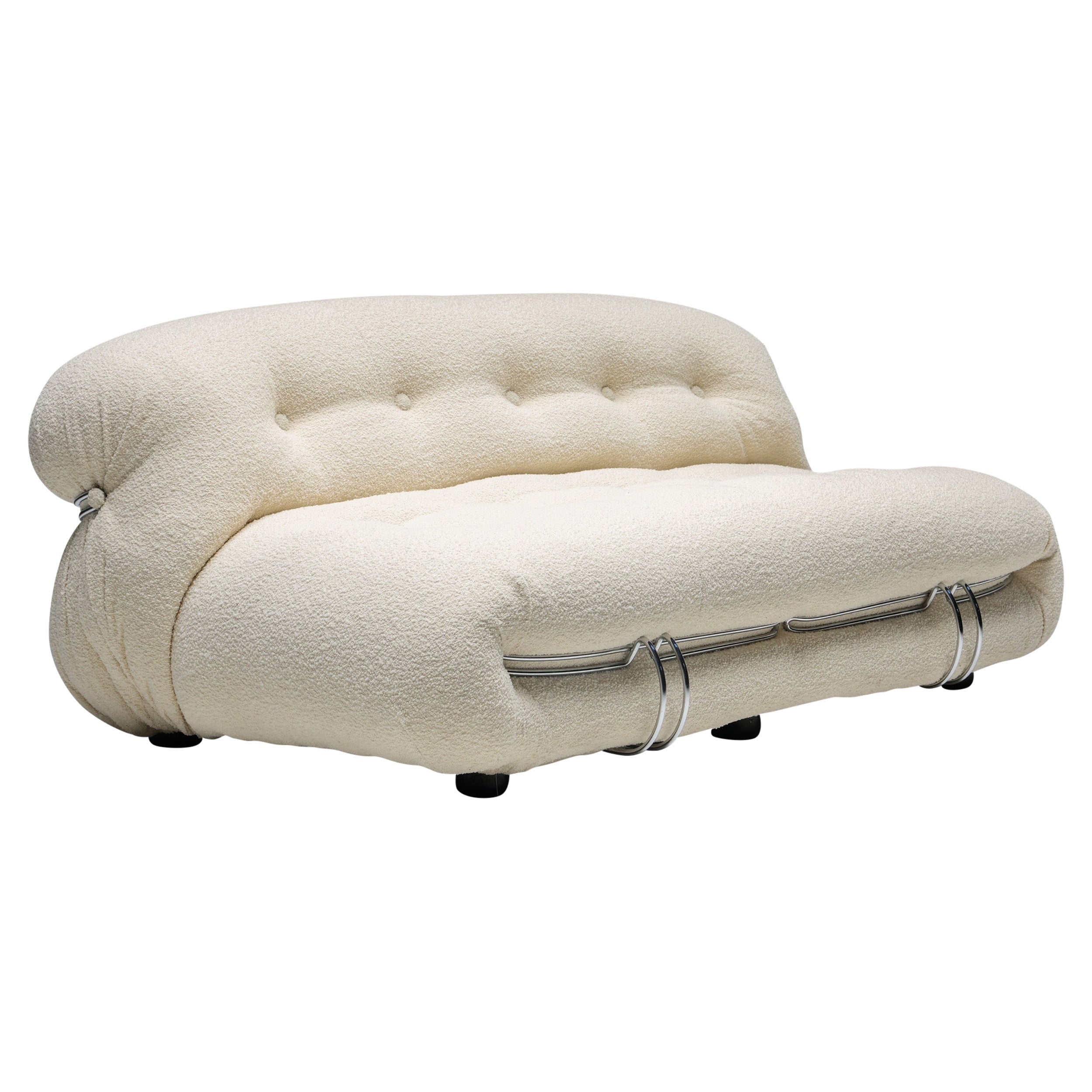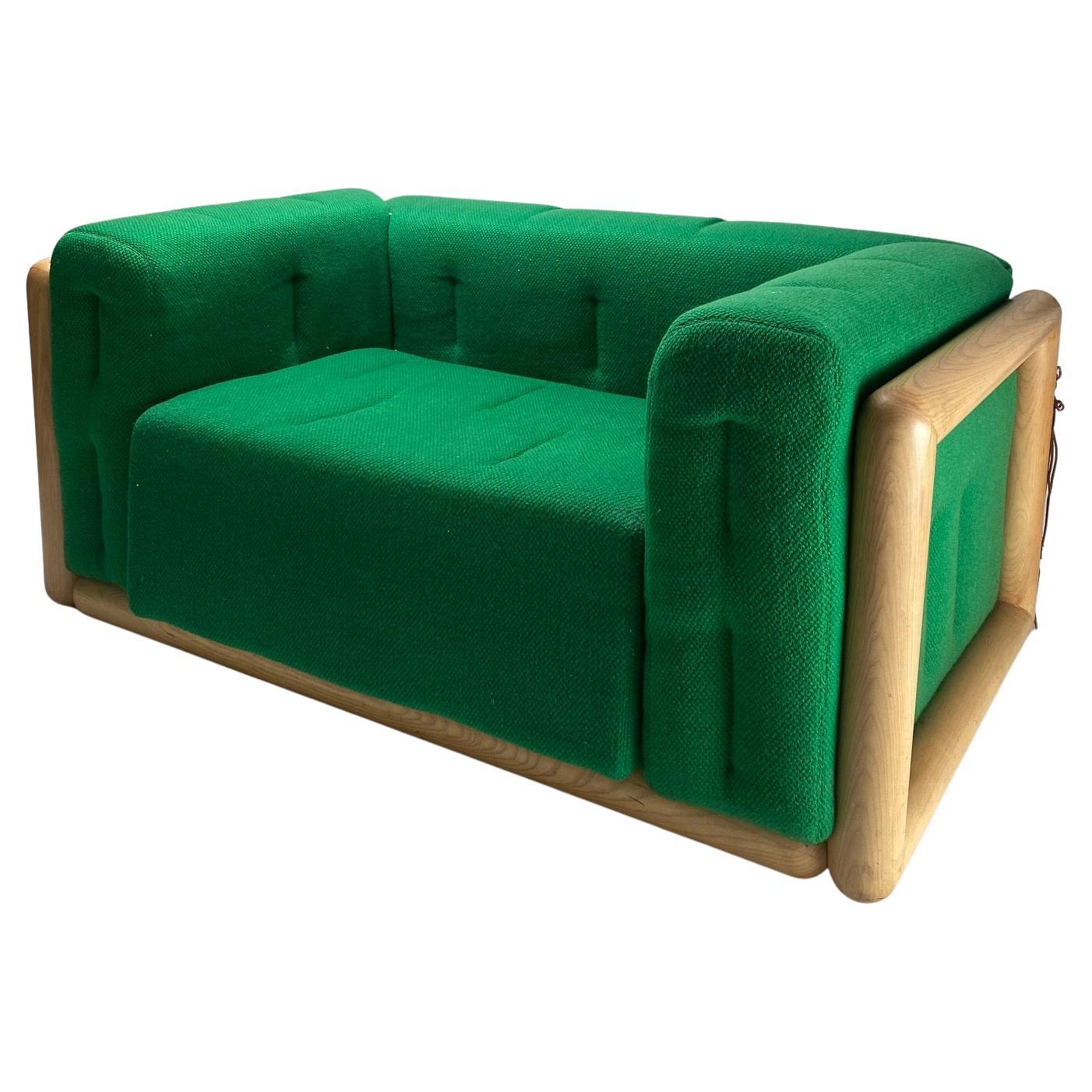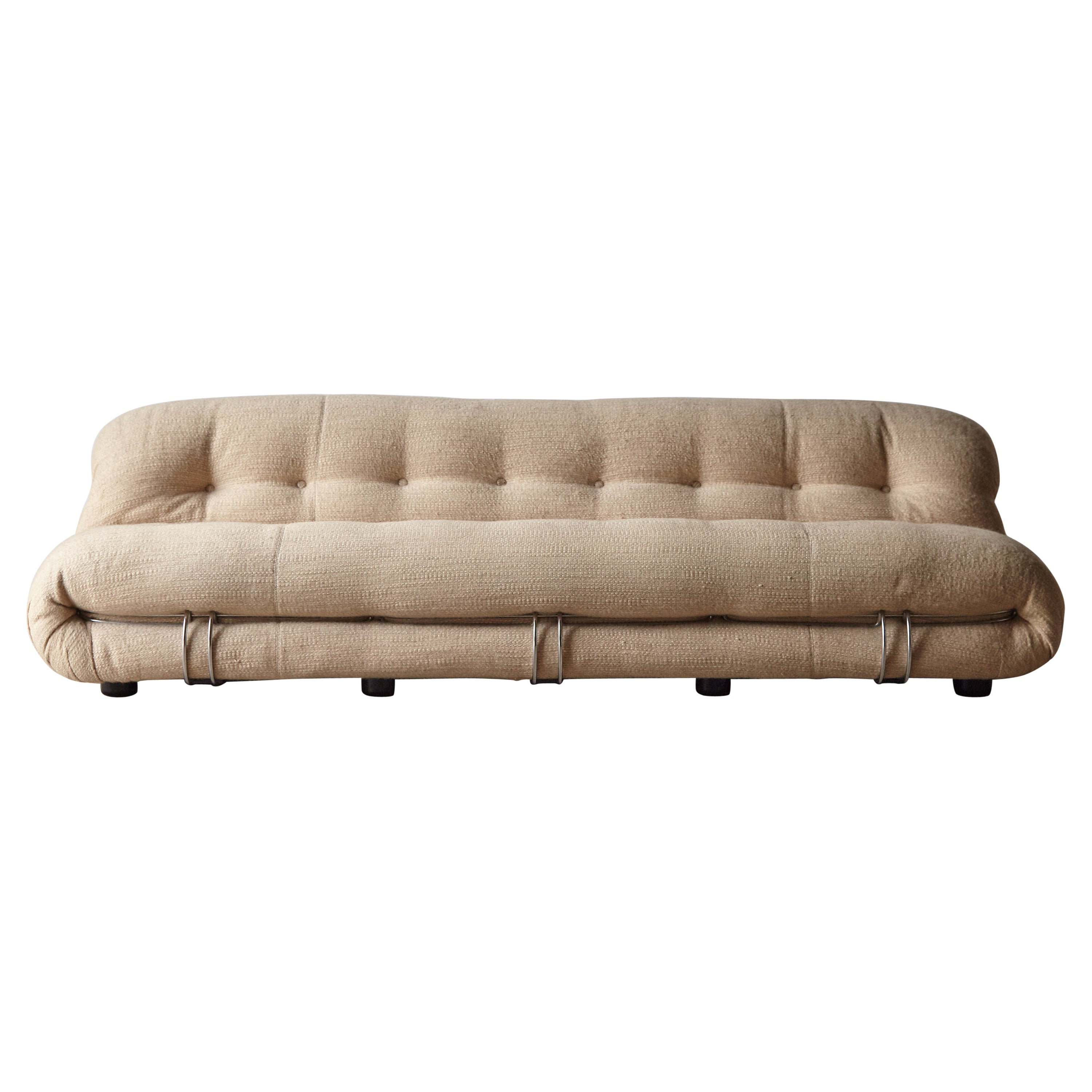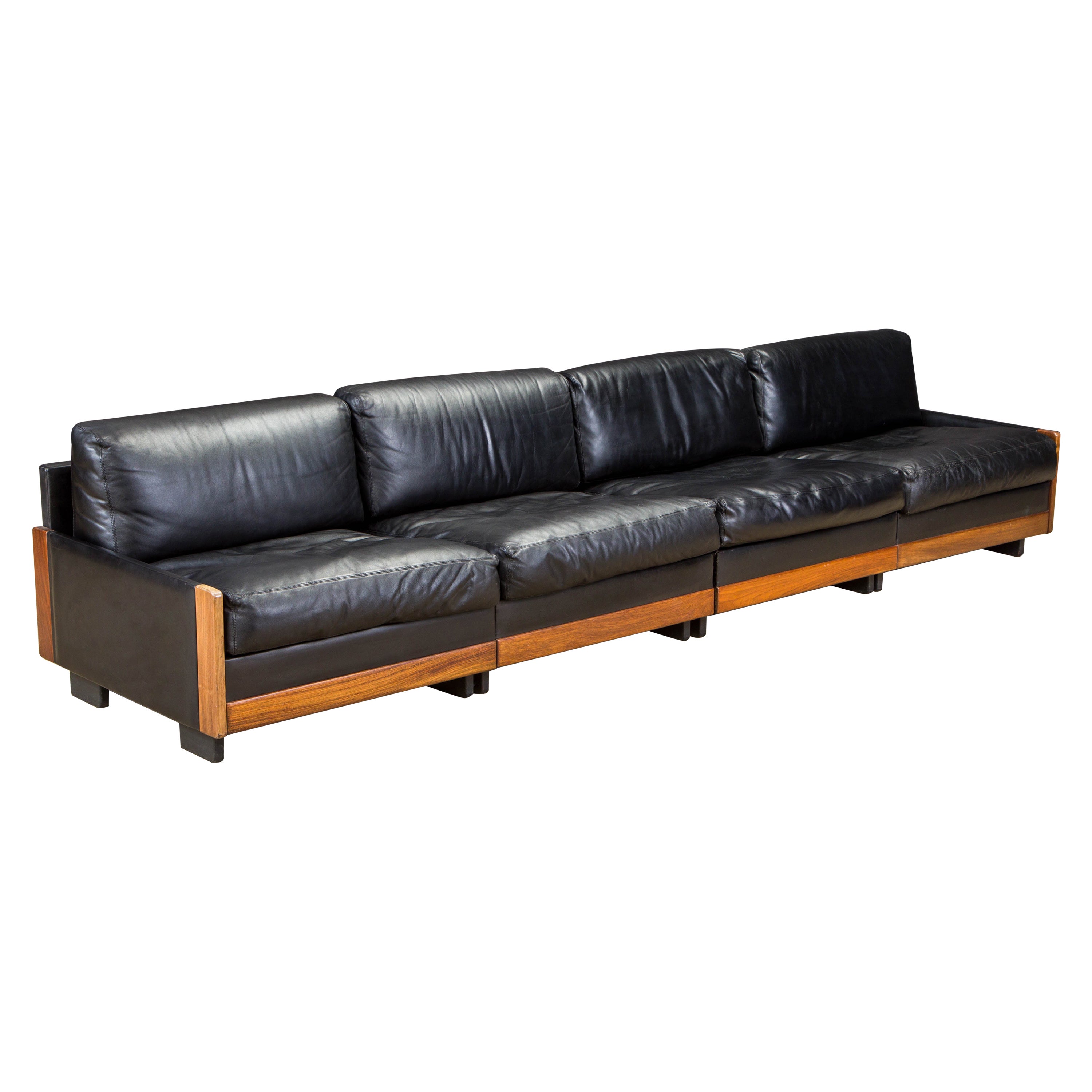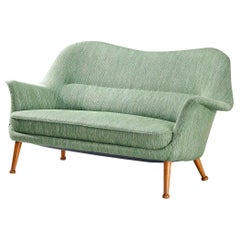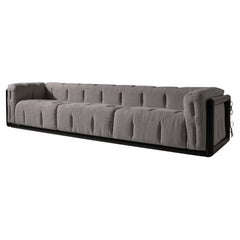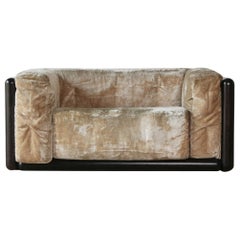
Carlo Scarpa 'Cornaro' Sofa for Simon, 1973
View Similar Items
Carlo Scarpa 'Cornaro' Sofa for Simon, 1973
About the Item
- Creator:Carlo Scarpa (Designer)
- Dimensions:Height: 25.79 in (65.5 cm)Width: 119.3 in (303 cm)Depth: 34.26 in (87 cm)Seat Height: 15.56 in (39.5 cm)
- Style:Mid-Century Modern (Of the Period)
- Materials and Techniques:
- Place of Origin:
- Period:
- Date of Manufacture:1973
- Condition:Wear consistent with age and use.
- Seller Location:Waalwijk, NL
- Reference Number:1stDibs: LU93319259553

Established in 2006, Morentz has a team of approximately 55 restorers, upholsterers, interior advisers and art historians, making it a gallery, workshop and upholstery studio, all in one. Every day, a carefully selected array of 20th-century furniture arrives from all over the world at the firm’s warehouse, where the team thoroughly examines each piece to determine what, if any, work needs to be done. Whether that means new upholstery or a complete restoration, Morentz's aim is always to honor the designer’s intention while fulfilling the wishes of the client. The team is up to any challenge, from restoring a single piece to its original glory to furnishing a large-scale hotel project.
- Arne Norell for Westbergs Möbler 'Divina' SofaBy Arne NorellLocated in Waalwijk, NLArne Norell for Westbergs Möbler, 'Divina' sofa, fabric, stained beech, Sweden, late 1950s This 'Divina' sofa is designed by Swedish designer Arne Norell. The seat is characterized ...Category
Vintage 1950s Swedish Mid-Century Modern Sofas
MaterialsFabric, Beech
- Theo Ruth for Artifort Sofa in Orange Red UpholsteryBy Theo RuthLocated in Waalwijk, NLTheo Ruth for Artifort, sofa, fabric, lacquered steel, The Netherlands, 1970. A Dutch two-seat sofa in orange red colored fabric by Theo Ruth. The back tilts slightly backwards and ...Category
Vintage 1970s Dutch Mid-Century Modern Sofas
MaterialsSteel
- Theo Ruth for Artifort Sofa in Yellow and Black UpholsteryBy Artifort, Theo RuthLocated in Waalwijk, NLTheo Ruth for Artifort, sofa, fabric, wood, Netherlands 1970. A Dutch settee in a two-toned, printed fabric by Theo Ruth. The back tilts slightly backward and has the recognizable ...Category
Vintage 1970s Dutch Mid-Century Modern Settees
MaterialsFabric, Wood
- Theo Ruth for Artifort Sofas Model '115' in Yellow Velvet UpholsteryBy Artifort, Theo RuthLocated in Waalwijk, NLTheo Ruth for Artifort, sofa model '115', fabric, wood, Netherlands, 1950s Dutch settees by Theo Ruth currently upholstered in a yellow velvet. The back of these sofas tilts slightl...Category
Mid-20th Century Dutch Mid-Century Modern Settees
MaterialsFabric, Wood
- Antonio Citterio for Moroso 'Cricket' Sofas in Blue LeatherBy Moroso, Antonio CitterioLocated in Waalwijk, NLAntonio Citterio for Moroso, sofas model 'Cricket', leather, Italy, 1988 Interestingly shaped blue leather settee by Italian designer Anto...Category
Vintage 1980s Italian Post-Modern Sofas
MaterialsLeather
- Jorgen Høj for Niels Vitsøe Sofa in Red Patinated LeatherBy Jorgen Hoj, VitsoeLocated in Waalwijk, NLJorgen Høj for Niels Vitsøe, settee, model '202', leather, aluminum, Denmark, circa 1960 Exclusive leather sofa designed by Jorgen Hoj who worked in the same atelier together with P...Category
Vintage 1960s Danish Scandinavian Modern Settees
MaterialsAluminum
- Cornaro sofa by Carlo Scarpa for Simon Gavina, Italy 1973By Carlo Scarpa, Simon Gavina EditionsLocated in Rotterdam, NLCornaro sofa by Carlo Scarpa for Simon Gavina, Italy 1973. Stunning solid round dark stained Mahogany wooden frame and thick upholstered cushions. The cushions are reupholstered in a...Category
Vintage 1970s Italian Mid-Century Modern Sofas
MaterialsLinen, Mahogany
- Carlo Scarpa Cornaro Loveseat / Armchair, Original Fabric, Italy, 1970sBy Carlo ScarpaLocated in London, GBAn original Carlo Scarpa Cornaro loveseat / armchair, original fabric, Italy. Produced by Gavina in the 1970s. We can reupholster in COM at additional cost. Fast shipping worldwide. ...Category
Mid-20th Century Italian Mid-Century Modern Sofas
MaterialsChrome
- Rare "Cornaro 220" Sofa by Carlo Scarpa for Simon International, 1970sBy Carlo ScarpaLocated in Skokie, ILCarlo Scarpa rare "Cornaro 220" Sofa by for Simon International, Italy, 1970s Additional Information: Materials: Stained mahogany, velvet, brass, leather Dimensions: 26" H x 119...Category
20th Century Italian Mid-Century Modern Sofas
MaterialsMahogany
- Carlo Scarpa Iroko and Velvet Cornaro Sofa for Studio Simon, 1974, Set of 2By Studio Simon, Carlo ScarpaLocated in Vicenza, ITSet of 2 Cornaro two-seater sofas, designed by Carlo Scarpa and manufactured by Studio Simon in 1974. Made of Iroko wood, foam, and azure chenille velvet. Excellent vintage conditi...Category
Vintage 1970s Italian Mid-Century Modern Living Room Sets
MaterialsChenille, Velvet, Foam, Wood
- Carlo Scarpa Iroko Wood and Green Velvet Cornaro Sofa for Studio Simon, 1974By Carlo Scarpa, Studio SimonLocated in Vicenza, ITCornaro two-seater sofa, designed by Carlo Scarpa and manufactured by Studio Simon in 1974. Made of Iroko wood, foam, and azure chenille velvet. Excellent vintage condition. Born in Venice on June 2nd, 1906, Carlo Scarpa began working very early. Only a year after he had first qualified as an architect in 1926, he began working for the Murano glassmakers Cappellin & Co. in a consultative capacity; from 1927, he began to experiment with the Murano glass, and this research not only gave him excellent results here but would also inform his progress for many years to come. Between 1935 and 1937, as he entered his thirties, Carlo Scarpa accepted his first important commission, the renovation of Venice’s Cà Foscari. He adapted the spaces of this stately University building which stands on the banks of the Grand Canal, creating rooms for the Dean’s offices and a new hall for academic ceremonies; Mario Sironi and Mario De Luigi were charged with doing the restoration work on the frescos. After 1945, Carlo Scarpa was constantly busy with new commissions, including various furnishings and designs for the renovation of Venice’s Hotel Bauer and designing a tall building in Padua and a residential area in Feltre, all worth mentioning. One of his key works, despite its relatively modest diminished proportions, was the first of many works which were to follow in the nineteen fifties: the [bookshop known as the] Padiglione del Libro, which stands in Venice’s Giardini di Castello and shows clearly Scarpa’s passion for the works of Frank Lloyd Wright. In the years which were to follow, after he had met the American architect, Scarpa repeated similar experiments on other occasions, as can be seen, in particular, in the sketches he drew up in 1953 for villa Zoppas in Conegliano, which show some of his most promising work. However, this work unfortunately never came to fruition. Carlo Scarpa later created three museum layouts to prove pivotal in how twentieth-century museums were set up from then on. Between 1955 and 1957, he completed extension work on Treviso’s Gipsoteca Canoviana [the museum that houses Canova’s sculptures] in Possagno, taking a similar experimental approach to the one he used for the Venezuelan Pavilion at [Venice’s] Giardini di Castello which he was building at the same time (1954-56). In Possagno Carlo Scarpa was to create one of his most incredible ever works, which inevitably bears comparison with two other museum layouts that he was working on over the same period, those of the Galleria Nazionale di Sicilia, housed in the Palazzo Abatellis in Palermo (1953-55) and at the Castelvecchio in Verona (1957- 1974), all of which were highly acclaimed, adding to his growing fame. Two other buildings, which are beautifully arranged in spatial terms, can be added to this long list of key works that were started and, in some cases, even completed during the nineteen fifties. After winning the Olivetti Award for architecture in 1956, Scarpa began work in Venice’s Piazza San Marco on an area destined to house products made by the Industrial manufacturers Ivrea. Over the same period (1959-1963), he also worked on renovating and restoring the gardens and ground floor of the Fondazione Querini Stampalia in Venice, which many consider one of his greatest works. While he worked on-site at the Fondazione Querini Stampalia, Carlo Scarpa also began building a villa in Udine for the Veritti family. To shed some light on how much his work evolved over the years, it may be useful to compare this work with that of his very last building, villa Ottolenghi Bardolino, which was near completion at the time of his sudden death in 1978. Upon completion of villa Veritti over the next ten years, without ever letting up on his work on renovation and layouts, Scarpa accepted some highly challenging commissions which were to make the most of his formal skills, working on the Carlo Felice Theatre in Genoa as well as another theatre in Vicenza. Towards the end of this decade, in 1969, Rina Brion commissioned Carlo Scarpa to build the Brion Mausoleum in San Vito d’Altivole (Treviso), a piece he continued to work on right up until the moment of his death. Nevertheless, even though he was totally absorbed by work on this mausoleum, plenty of other episodes can offer some insight into the final years of his career. As work on the San Vito d’Altivole Mausoleum began to lessen in 1973, Carlo Scarpa started building the new headquarters for the Banca Popolare di Verona. He drew up plans that were surprisingly different from the work he carried out simultaneously on the villa Ottolenghi. However, the plans Carlo Scarpa drew up, at different times, for a monument in Brescia’s Piazza della Loggia commemorating victims of the terrorist attack on May 28th, 1974, make a sharp contrast to the work he carried out in Verona, almost as if there is a certain hesitation after so many mannered excesses. The same Pietas that informs his designs for the Piazza Della Loggia can also be seen in the presence of the water that flows through the Brion Mausoleum, almost as if to give a concrete manifestation of pity in this twentieth-century work of art. Carlo Scarpa has put together a highly sophisticated collection of structures occupying the mausoleum’s L-shaped space stretching across both sides of the old San Vito d’Altivole cemetery. A myriad of different forms and an equally large number of different pieces, all of which are separate and yet inextricably linked to form a chain that seems to offer no promise of continuity, arising out of these are those whose only justification for being there is to bear the warning “si vis vitam, para mortem,” [if you wish to experience life prepare for death] as if to tell a tale that suggests the circle of time, joining together the commemoration of the dead with a celebration of life. At the entrance of the Brion Mausoleum stand the “propylaea,” followed by a cloister that ends by a small chapel, with an arcosolium bearing the family sarcophagi, the central pavilion, held in place on broken cast iron supports, stands over a mirror-shaped stretch of water and occupies one end of the family’s burial space. The musical sound of the walkways, teamed with the luminosity of these harmoniously blended spaces, shows how, in keeping with his strong sense of vision, Carlo Scarpa could make the most of all his many skills to come up with this truly magnificent space. As well as an outstanding commitment to architectural work, with the many projects we have already seen punctuating his career, Carlo Scarpa also made many equally important forays into the world of applied arts. Between 1926 and 1931, he worked for the Murano glassmakers Cappellin, later taking what he had learned with him when he went to work for the glassmakers Venini from 1933 until the 1950s. The story of how he came to work on furniture design is different, however, and began with the furniture he designed to replace lost furnishings during his renovation of Cà Foscari. The later mass-produced furniture started differently, given that many pieces were originally one-off designs “made to measure.” Industrial manufacturing using these designs as prototypes came into being thanks to the continuity afforded him by Dino Gavina, who, as well as this, also invited Carlo Scarpa to become president of the company Gavina SpA, later to become SIMON, a company Gavina founded eight years on, in partnership with Maria Simoncini (whose own name accounts for the choice of company name). Carlo Scarpa and Gavina forged a strong bond in 1968 as they began to put various models of his into production for Simon, such as the “Doge” table, which also formed the basis for the “Sarpi” and “Florian” tables. In the early seventies, other tables that followed included “Valmarana,” “Quatour,” and “Orseolo.” While in 1974, they added a couch and armchair, “Cornaro,” to the collection and the “Toledo” bed...Category
Vintage 1970s Italian Mid-Century Modern Living Room Sets
MaterialsVelvet, Foam, Chenille, Wood
- Cornaro Loveseat by Carlo Scarpa for Simon Gavina, Italy 1973By Carlo ScarpaLocated in Rotterdam, NLCornaro '140' armchair / loveseat by Carlo Scarpa for Simon Gavina, Italy 1973. Stunning solid round dark stained Mahogany wooden frame and thick upholstered cushions. The cushions a...Category
Vintage 1970s Italian Mid-Century Modern Loveseats
MaterialsMahogany, Linen
